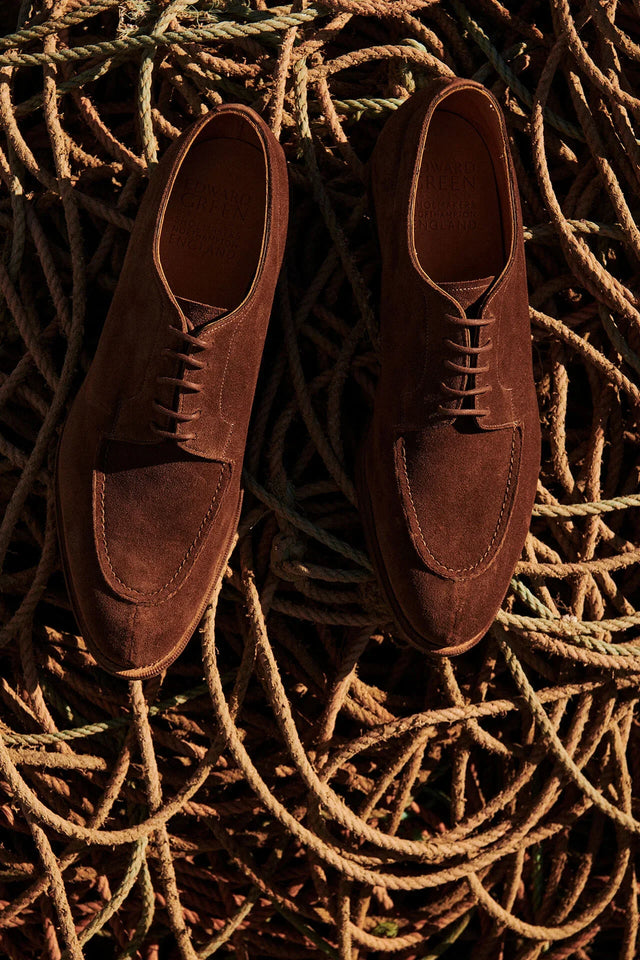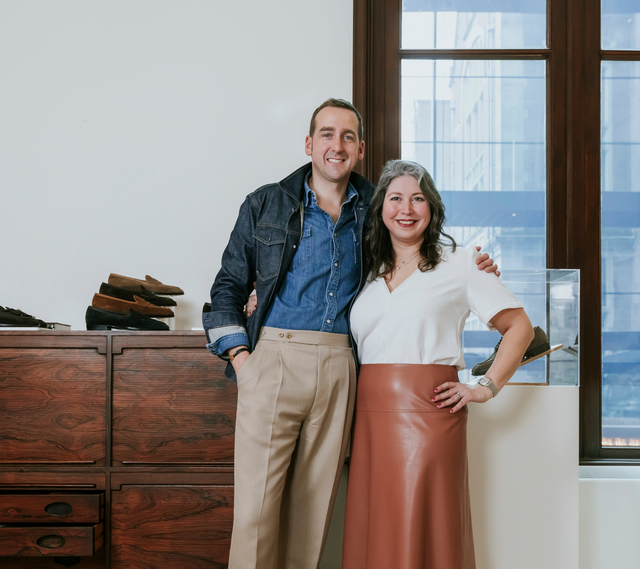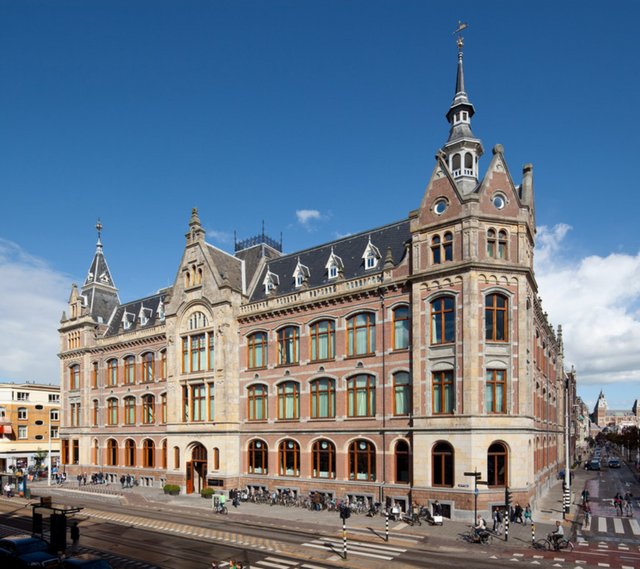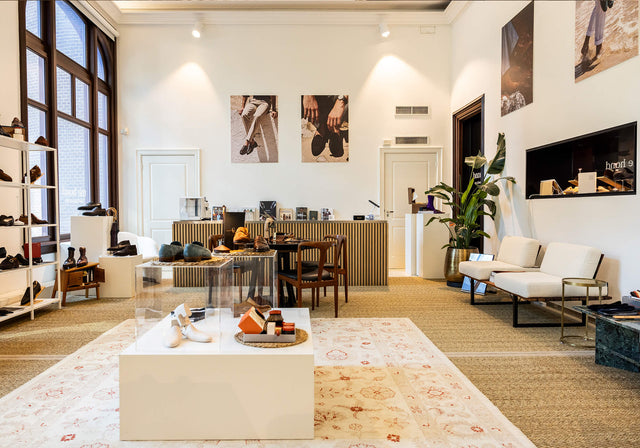Hands On: Edward Green's Dover
When examining Edward Green’s revered canon of shoemaking, the Dover lace-up derby resides at the apex of reputation along with the Piccadilly loafer (which you can read all about here) and the Galway field boot. A firm favourite of ours and innumerable shoe connoisseurs around the world, not only is it instantly recognisable, but it’s striking yet somehow understated. What’s more, it’s been made by hand in Northampton for roughly 100 years now, which only proves that it is a certified classic.

Before we jump into it, whilst it may be an obvious point to make it’s important to clarify that the Dover falls into the derby category of men’s shoes, which means that it’s constructed with an open-lacing system. Because of this, derby shoes generally provide a more comfortable fit than an oxford as your feet have more room. According to our co-founder Dennis, this especially benefits men who have “more volume around the instep and forefront”. Furthermore, from a style perspective the raised lacing system, which stretches across the tongue, makes derby shoes a touch more casual and versatile than a sleek oxford.

So, what makes the Dover special? In short, it’s the hand-sewn Norwegian split toe; a beautiful artisanal detail that’s not often found in ready-to-wear shoes due to it being incredibly laborious to create. This is due to the fact that the Dover has a three-part upper with two components positioned at right angles to each other. It’s a complex arrangement that a sewing machine isn’t able to sew together, and so two of Edward Green’s specialist craftsmen – who happen to be a brilliant father-and-son team called Andy and Nathan Peach – have to get hands-on.
Sat back-to-back in the workshop in Northampton, the Peaches use a boar’s bristle, which is narrower than a needle, that has a single split end carefully attached to a thread. Then, by carefully weaving in and out of the leather with an awl, the two pieces are eventually joined together edge-to-edge resulting in a delicate, fine, and slightly raised split toe finish that’s easily one of the most aesthetically pleasing details found in high-end men’s footwear.

Edward Green offer the Dover a variety of different lasts, these being the 202, 606, 82 and 32. Whilst they all have their merits, we prefer the 202 last due to the traditionally English characteristics that it offers through the softly-rounded toe. We think it makes the Dover a much more wearable shoe; one that’s fit for both business and pleasure, and everything in between. That said, if you wish to order the Dover through our MTO programme on the 666 or any of the other lasts, that’s of course possible!
We firmly believe that the Dover is one of the most useful shoes you can have and Dennis is testament to that statement. “Just like my jeans, the Dover exists at the centre of my shoe wardrobe,” he says. These days, Dennis is constantly on the move – whether that’s running around Amsterdam or travelling around Europe seeing clients – and the Dover provides all the necessary attributes he needs: comfort, versatility, style and long-lasting quality.
Currently at The Hand, we have two different options of Dover in our core collection. First up is the mink suede iteration, which is crafted from a rich and dark brown leather that’s as timeless as it is versatile. Whether worn for business or pleasure, this model comes with a thin R1 rubber city sole and an unlined construction which ensures lightness and all-day comfort (particularly in hot weather). The second model is the mole suede version, which is more casual in nature than mink suede due to it being several shades lighter. It’s also unlined with the R1 rubber sole, which provides stability and comfort in a range of different weathers, and it will pair well with garments in neutral and brown tones.
In the coming weeks, we will be releasing a Dover crafted from a supple navy suede and we’re looking forward to sharing more details on that in due course. For now, we hope that this Journal article serves as a succinct overview to one of our all-time favourite models. As Dennis puts it: “At first, the Dover needed to grow on me as it can look a bit classic. But, once I tried it and saw it on my feet, there's no other!”
As always, if you have any questions about the Dover, don’t hesitate to get in touch – we’d love to help you!
Browse our offering from Edward Green, here.








